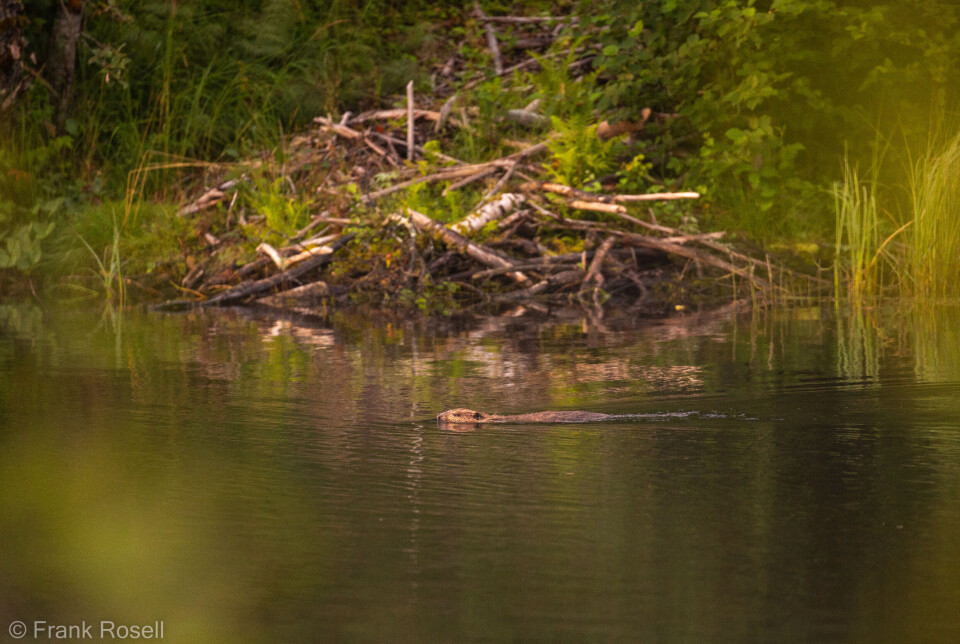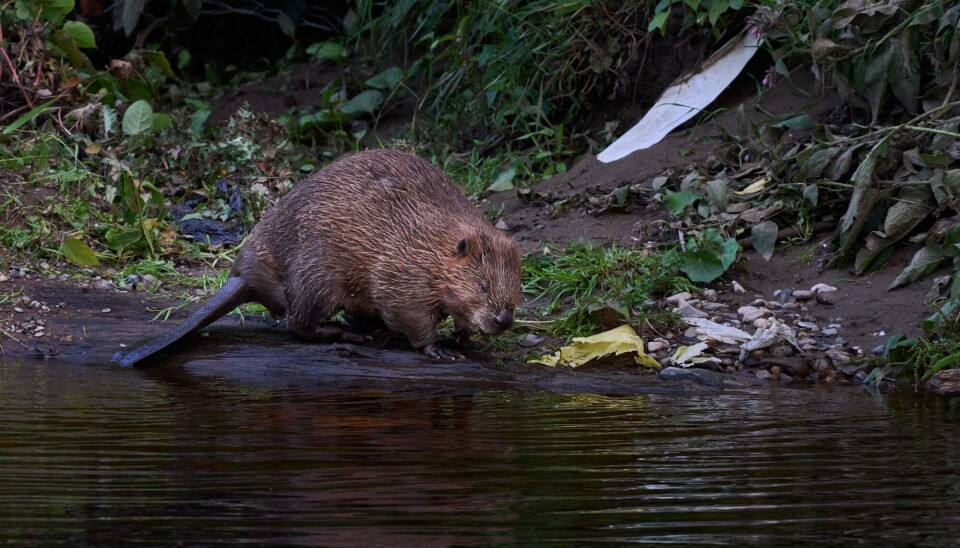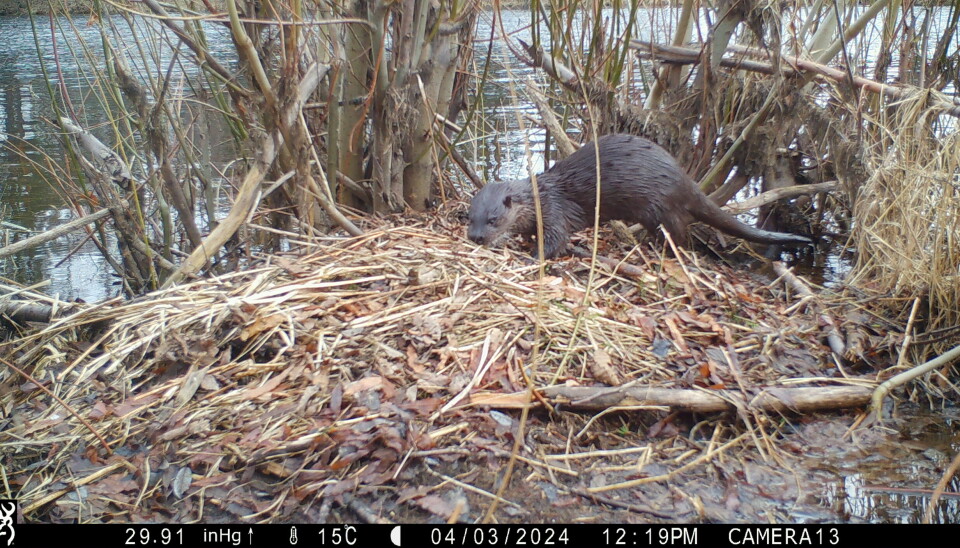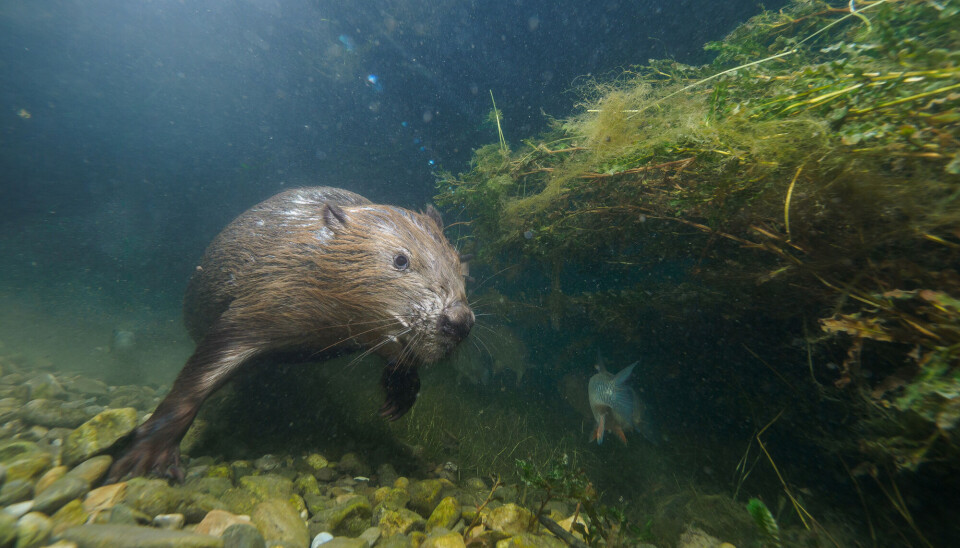It's not just beavers that live in beaver lodges
Beaver lodges are built mainly for beavers and their families, but they often receive visits from other animals.

The beaver is a true workaholic.
In fact, it's often compared to humans. It's a species that builds, organises, and influences the places in which it lives.
Beavers gnaw through thick tree trunks, construct dams out of large logs, and build their own homes.
Researchers have now taken a closer look at which other animals benefit from the beaver's tireless work.
They have monitored the beavers' own homes – the beaver lodges.
A pile of twigs
Along streams, rivers, ponds, and lakes, beavers builds their lodges.
They may look like a pile of twigs.
But they are in fact sophisticated structures that beavers use all year round.
"The entrances are below the surface of the water. Beavers dive straight into a large chamber that functions both as a swimming pool for the young and a dining area for the family," says Frank Rosell, a researcher at the University of South-Eastern Norway.
Together with colleague Hanna Kavli Lodberg-Holm, he is part of the Norwegian beaver project.

Good hiding places
From the main chamber, beavers dig tunnels further into the riverbank that lead to one or more dry bedrooms.
They use logs, twigs, and mud as building materials, and there are constant renovations and extensions as the family grows.
These lodges are very important hiding places for beavers during the day and throughout the long, cold winter.
But Rosell and Lodberg-Holm suspected that other animals also visited the lodges from time to time.
Filmed beaver lodges
To find out which animals these were, the researchers set up wildlife cameras at 18 beaver lodges in Telemark, Eastern Norway.
They also placed wildlife cameras at two random locations on the opposite side of the river, where there were no beaver lodges.
This allowed them to compare how many animals there were on each side of the river.

These animals use the lodges
The researchers found six species that regularly spent time around the beaver lodges.
These were otters, American mink, wood mice, field voles, and the birds robin and reed bunting. All of these were found in far greater numbers near the lodges than on the opposite side of the river.
But what were they doing there? And where were the beavers?
It turned out that these animals were most active around the same time as the beavers – during the evening and at night.

Warm and cosy
Previous research has shown that insects and fish also tend to stay near beaver lodges. Perhaps that’s why the small rodents and birds gather there, to hunt or feed on fish and insects?
Or maybe they're drawn to the leftovers – bits of branches, twigs, and grains colleced by the beavers in autumn.
Another possibility is warmth: Inside the beaver lodges, temperatures stay pleasantly warm through the cold winter months.
Since the wildlife cameras captured only still images, not video, the researchers couldn’t say for sure why so many other animals visit the lodges. They plan to explore this further in a new research project starting soon.

Create new habitats
Most viewed
As mentioned, the beaver is one of the species that most actively shapes and transforms its surroundings.
Some, especially farmers, might see them as destructive.
By building dams, beavers can flood fields and forest roads, and they sometimes make their way into orchards, gnawing through apple trees, according to this article by the Norwegian Broadcasting Corporation NRK.
Yet, their engineering also brings life. Each dam they build creates entirely new habitats.
These benefit small rodents, fish, ducks, and insects – even moose, the king of the forest, according to a new Finnish study.
All these species thrive in the diverse landscapes that emerge, from flooded woodlands to flowering beaver meadows.
"There's no doubt that life around the lodges is teeming with activity," says Rosell.
———
Translated by Alette Bjordal Gjellesvik
Read the Norwegian version of this article on ung.forskning.no
References:
Kivinen, S. & Nummi, P. Immediate facilitation and engineering legacy of beavers: 54 years of patch dynamics in a boreal landscape, Science of the Total Environment, vol. 990, 2025. DOI: 10.1016/j.scitotenv.2025.180341
Rosell et al. A home for the many? Beaver lodges as hotspots for bird and mammal diversity, Science of the Total Environment, vol. 990, 2025. DOI: 10.1016/j.scitotenv.2025.179898

Subscribe to our newsletter
The latest news from Science Norway, sent twice a week and completely free.
























































